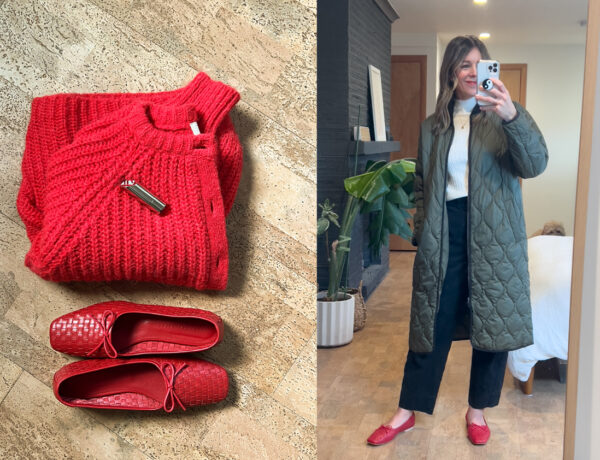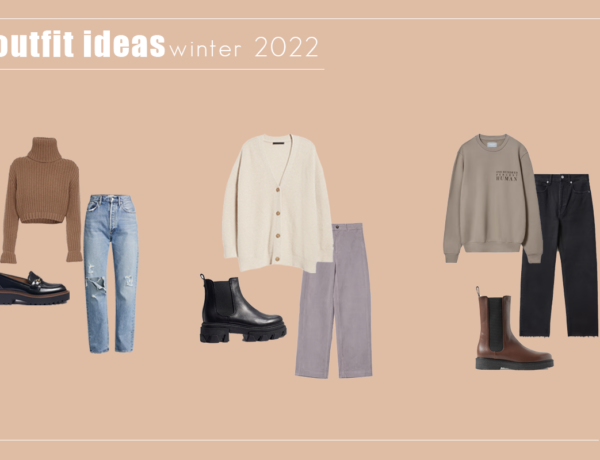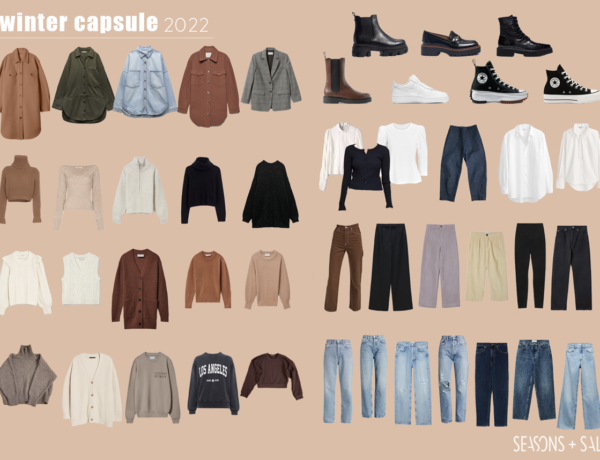A few weeks ago you guys probably read Leah’s compelling and provocative post about why you should consider who makes your clothes. (If you haven’t, I strongly urge you to go read it, and then come back to this post.) Like me, you might feel moved, even called to think twice about the hands that made your clothes and what it really takes to get those items priced so cheaply for fast-fashion retailers.
I felt like once I started to learn about what really went on in the apparel industry, I couldn’t “un-know” it. In this case ignorance is bliss, but sadly our ignorance coupled with our demand for dirt-cheap clothing is actually hurting people. But take heart, change starts with you and me even on the smallest of levels. And the process of re-wiring how we do our shopping may not be as daunting as you think.
So what’s next? How do you get from a place of shopping solely with your personal economy in mind to a place of purposefully buying from companies that do not engage in the fast-fashion game? Here are three baby steps I’d like to share with you guys. Keep in mind, I am no expert on this topic, but I can share what has worked for me.
1) Slow down. This has been so key for me. It’s given me time to learn and re-evaluate. I have taken time to learn what I truly like, instead of wasting money on items I think I am going to like and then don’t wear or get rid of quickly. Slowing down has allowed me time to learn about the growing list of independent designers and ethical retailers. It seems the more I look the more I find (mostly on the internet and through blogs and Instagram).
Don’t bemoan what you’ve already bought. It would be very unsustainable to go toss out all your fast fashion items. The best thing now is to wear them for the maximum amount possible before passing them on.
2) Shift your mindset about clothes being a consumable good. Why do we feel like we have to constantly add to our closets? The more we fill them up the more we need to clear them out, thus the cycle of clothing being a consumable good. Are we regularly adding to our coffee mug collection or the number of plates in our cupboard? Or can we get to a place where there is finally “enough” or maybe a slower trickle of changeover?
If we don’t want our clothing to be consumable goods we must shift over to the mindset of buying quality over quantity. If you keep buying paper plates to eat off of, of course you will be replacing them regularly. But if you buy some sturdy china or fiestaware, you can have a gorgeous set of ten that you use and lovingly care for year after year. The same goes for clothes. If you keep buying cheap shirts from Old Navy or H&M you’re probably only going to get a few seasons out of them. Spend $130 on one pair of amazing (and probably made in the USA jeans) instead of five cheap pairs that won’t last and probably total the same cost. But Andrea, you say, I like replacing my clothes every season so I can stay “current” and “trendy.” My response to that is: I encourage you to dig deep to find out if you’re truly being stylish or just trendy. Does your sense of style come from within and what you like, or are you like a cork riding the ocean waves of endless fashion? If you buy what you truly like and love, you’ll learn to be okay with investing some more dollars into it because it serves you, and you aren’t serving a trend – plus you end up wearing it much longer. True style transcends trends. Not that I am one to buck trends by any means, I love them. However they can be done poorly and they can be done well. Pick the top trends you love and do a few of them very well rather than trying to do them all cheaply.
3) Learn to love second-hand shopping. I did not become a successful thrifter until the last few years. I think the biggest single component for me to be successful is that I know what I am after (have a list) and I have a semi-clear picture of my own personal style. The second biggest factor is definitely which stores I shop at. When I lived in Eugene and Salem (Oregon) I never had success at stores like Goodwill or St. Vincent dePaul. In Eugene I did okay at Buffalo Exchange and in Salem Value Village was my jam. But moving to Portland has been a second-hand feast! There are so many options here and even the Goodwill on Burnside has been great to me. Some of my favorite items have come from there. If you live in a smaller city, it might be worth to drive to the nearest big city just for the thrifting.
Buying second-hand saves clothing from the landfill and keeps the item from feeding into the 21 billion pounds of textile waste the U.S. creates per year. The brands you’re buying second-hand might not have been ethically or sustainably made, but giving those items a second life keeps you out of the fast-fashion cycle and is a good choice for the environment. For more on how to thrift well see my tips.
I feel like I’ve learned so much in the last few months and I have a lot more to share. I am already jotting down notes for a part two to this post, stay tuned! Later I also plan to highlight some of my favorite ethical brands that I’ve come across, from accessories to apparel to shoes. It’s an exciting marketplace out there. If you’re making the change in how you shop, I’d love to hear from you!
xo
andrea
>> PART 2: MAKING THE SWITCH TO AN ETHICAL WARDROBE, 3 MORE BABY STEPS






I loved this article Andrea! It is easy to become disheartened once you find out about these things, but I like that you’ve provided some nice baby steps to help ease into it :) thanks again!
So glad I could help Dani. Thanks for reading! :)
Really enjoyed this post. This makes ethical shopping sound a little less intimidating. What are some of your favorite Portland thrift stores? I recently found a great pair of jeans at the Buffalo Exchange on Burnside, but haven’t ventured further than that. I’d love some local tips if you’re willing to share!
Hi Stacy! Thanks for your comment! I am always happy to share! :) I have had a lot of good luck at the Crossroads on NW 23rd. Both selling (though they pay cheaply) and buying. I have also purchased three of my favorite items (older era Levi’s flannel shirt, anthro brand chambray top, and anthro brand shorts) at the Goodwill on West Burnside. I am pretty sure there is also a Crossroads on the East Side, I’d love to check that one out, and I heard there is a Goodwill in the Hawthorne area that is good. Also, I’ve been following a consignment shop on IG (@consigncoture) that is in St. John’s that looks like it has good stuff too.
Thanks for all the suggestions! Will definitely check those out soon :)
Great post, Andrea! It does feel overwhelming to go from 0 to 60. Thanks for your eloquent words and kind reminder that every little bit counts. One of my favorite posts to date. :)
Thanks so much friend! That means a lot coming from you! ;)
These are great small steps! I enjoyed reading them and kind of patting myself on the back for falling into habits that align with your suggestions- I love thrifting and through capsuling, although I’m transitioning out of using a solid capsule wardrobe, I’ve learned to slow way down on how fast I cycle my clothing and reducing my imprint. Love it! I’d love to see some more tips!
Kate
kateintheclassroom.com
Yay! That is great to hear! Yes, I plan on sharing more tips in the future! It’s so fun to share with you guys!
Excellent read! I have been flopping all over, going back and forth on ethical versus cheap. The last few years of penny pinching has made me have a hard time parting with the extra dollars for ethically produced clothing, and thrifting isn’t great in my area. I know ethically produced is the best and I just need to change my mindset about how cheaper isn’t always better. Thank you for the encouragement and practical baby steps!
I can so relate to going back and forth – especially when it comes to kids’ clothing! (Maybe another blog post? :) You are right, I think so much of this is about our mindset, we have been entrenched to think “deal, deal, deal” Myself included! I still struggle with this too. So glad I could be a bit of an encouragement!
This was a genuinely useful post, Andrea. It’s easy to recognize what’s wrong, and it’s nearly as easy to get overwhelmed by where to start when you’re juggling work and kids and…and… Baby steps is a super helpful sanity check. I’ll be watching with interest if you tackle the kid thing. That one is far trickier in my estimation…
Thanks so much Maggie, I am so glad you could relate!
Agreed, the kid thing IS far trickier. Right now I am super thankful to be utilizing a LOT of hand-me-downs. I have two girls, 6 and almost 4, so the second one wears nearly all of her sister’s old clothes. My son (18 mo.) gets a lot of hand me downs from a cousin. And then the Grandmas buy them a lot of clothes. I think for me to buy them “ethically made” clothes only I would have to adopt a mindset of being okay with them having tiny wardrobes. I am slowly finding some pretty cool kid clothing shops. Yeah, I’ll keep you posted! :)
Looking forward to it! One thought popped into my head to pass along, having realized it might not be common knowledge. Parents of multiples organizations often have yearly or bi-annual sales that are open to the public. If you’ve got a local group these can be great opportunities to score. (I’m not a master thrifter but these are EASY pickings.) for what it’s worth.
Great tip! Thanks Maggie!
Thank you so much for sharing this Andrea! Ethical shopping has been something that I have struggled with ever since it came to my attention. Your tips are great way to start the change! Keep up the great post!
Love your blog!
Thanks so much Leah! It’s nice to know we are in this together. It’s definitely not an easy choice, but it’s totally worth the challenge, right? :)
Thanks so much for sharing Andrea! Ethical shopping is always tough thing to do! I love that you have decide to do it! Love your blog and all your post! :)